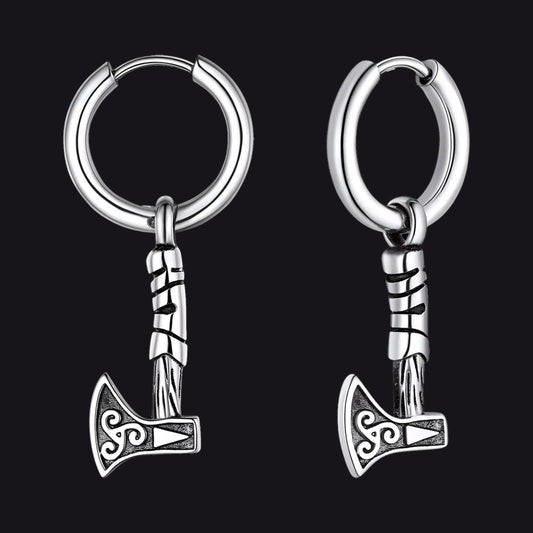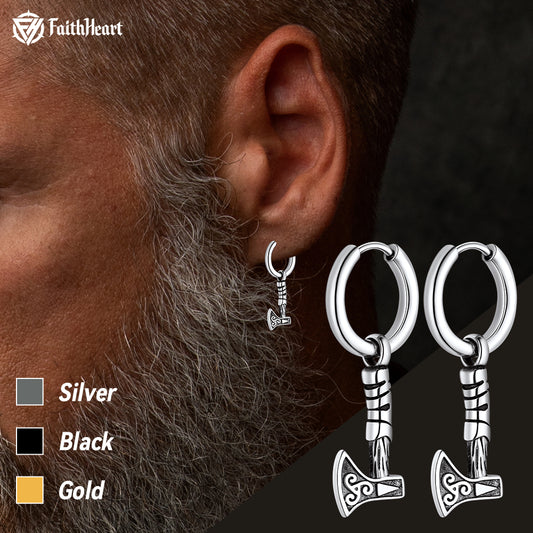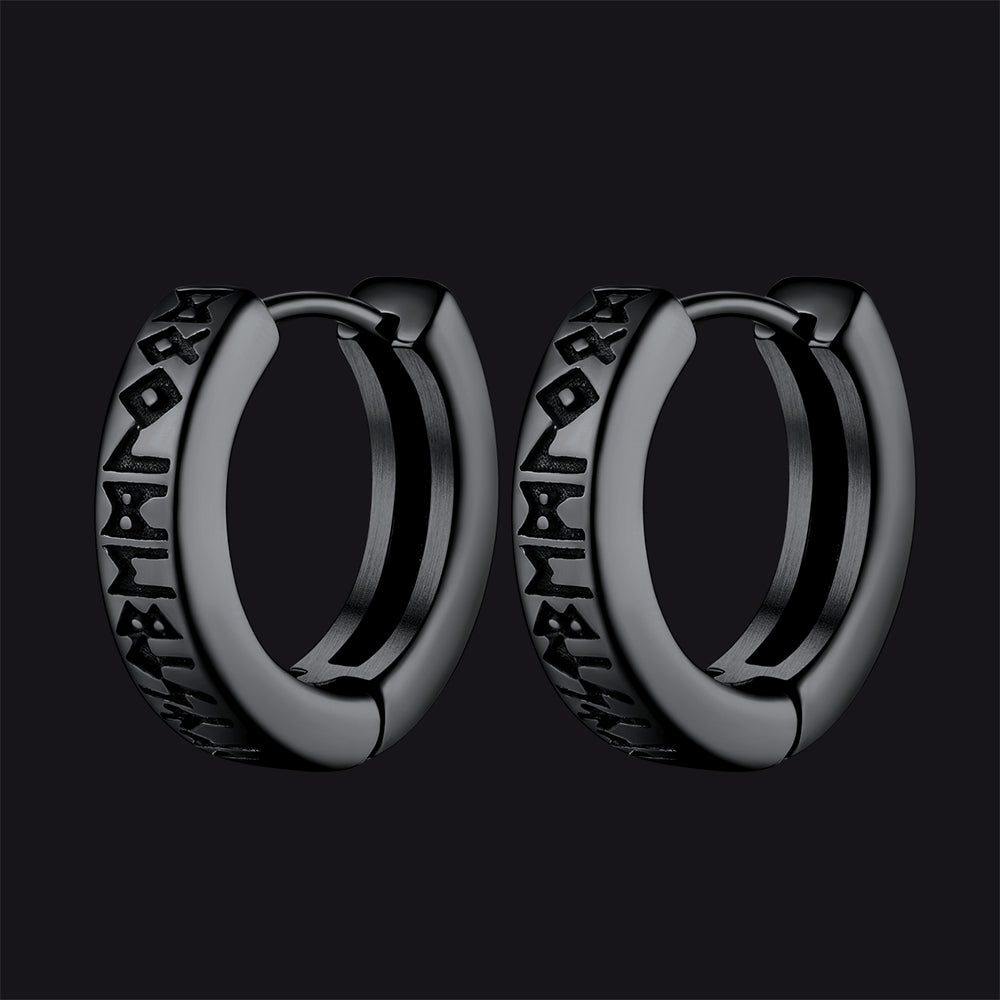8 Common Viking Jewelry Myths That Are Completely False
When you think of Viking jewelry, what comes to mind? You may be shocked if it's something huge, crude, and straight from a fantasy epic. Many common misconceptions of Viking decoration are untrue and were influenced more by contemporary imagination than historical reality. The story told by the artifacts is far more captivating. Here, we'll bust 8 biggest myths and distinguish the historical riches from Hollywood props.

Myth 1: Vikings Only Wore Simple, Functional Jewelry
Put aside the notion of Vikings wearing crude, clunky ornaments. The truth is far more refined. Vikings were skilled metalsmiths who produced jewelry with exquisite details. Beautiful gold and silver objects created using advanced techniques like granulation (small metal balls) and filigree (fine wire-work) have been discovered by archaeologists. This was great art, not just useful equipment. Their works were so elaborate that they rivaled the best work from anywhere in Europe. They sourced materials from far-off places and valued intricate, beautiful designs, demonstrating a culture that valued fine craftsmanship.
Myth 2: All Viking Jewelry Was Made of Silver
Although silver was widely used and the most frequently discovered valuable metal in Viking hoards, it was by no means the only material they employed. Jewelry materials differed greatly based on a person's social status and level of wealth. For the wealthy and influential elite, gold was the ultimate prestige symbol. Bronze was far more widespread and utilized by a wider variety of individuals for everyday objects. Simpler, more useful parts were even made from iron. In addition to metals, amber, which was abundant along the Baltic Sea coast and frequently referred to as the "gold of the North," was highly prized by Vikings. They also used semi-precious stones like rock crystal and carnelian in their designs, as well as multicolored glass beads, many of which were imported. This diversity demonstrates a rich material culture in which many materials were employed for their beauty, availability, and symbolic worth.

Myth 3: Viking Women Wore Minimal Jewelry Compared to Men
Contrary to popular belief, Viking women wore far more jewelry than men. Archaeological discoveries from graves reveal that women were often buried with impressive amounts of treasure. A high-status woman might have elaborate necklaces with fifty or more beads, several brooches, multiple arm rings, and pendants.
A distinct part of their outfit was a pair of large oval brooches worn on the chest. These fastened the straps of an apron-style dress and were often linked by a decorative chain or a string of beads. Men's jewelry, in contrast, was minimal—typically just an arm ring or a simple finger ring. A woman's collection of jewelry directly reflected her family's wealth and social standing, making her a walking display of her husband's success.
Myth 4: Viking Jewelry Was Purely Decorative
Although Viking jewelry was exquisite, it was rarely worn for show. The majority of artworks fulfilled several practical, economic, and spiritual purposes. For example, brooches were necessary to secure cloaks and other clothing. Arm rings and other silver or gold items functioned as a form of wearable wealth. This "hack-silver" might be sliced into smaller pieces and used as currency for trade. Additionally, jewelry had a profound spiritual meaning. Wearing pendants in the shape of Mjölnir, Thor's hammer, was a sign of devotion to the Norse gods and a protective measure. In addition, jewelry played a role in society. Chieftains would give their warriors arm rings as a sign of loyalty and courage, which bound their followers to them. Jewelry was buried with its owner, reflecting their position in life and preparing them for the afterlife.

Myth 5: The "Viking Helmet with Horns" Was a Common Jewelry Motif
The horned helmet is perhaps the most persistent myth about Vikings, and it is also present in jewelry. Any piece of modern jewelry that features a horned helmet is not based on historical fact. Although archaeologists have never found a single helmet with horns from the Viking era, the few that have been found in Scandinavia date to the Bronze Age, which is almost 2,000 years before the Vikings lived. The most popular image of a horned helmet comes from the 19th century, specifically from costumes made for Richard Wagner's opera "Der Ring des Nibelungen" in the 1870s. Since then, the common perception of Vikings has included this dramatic, fictitious appearance. Genuine Viking jewelry never has horned helmets, but rather incorporates elements from their mythology and surroundings, such as geometric designs, interlacing creatures, and god symbols.
Myth 6: Vikings Were Dirty and Didn't Maintain Their Jewelry
The "dirty Viking" stereotype is a total fabrication. In actuality, historical narratives and archeological findings demonstrate how important personal grooming and hygiene were to the Vikings. They bathed regularly, at least once a week on Saturdays, a day known in Old Norse as laugardagr, or "washing day." Excavations have found grooming equipment containing combs, tweezers, and even ear scoops. The cleanliness of the Vikings was frequently commented on by contemporary writers from other cultures, such as the English, who occasionally complained that it made them unduly alluring to local women. As a sign of their prestige and self-respect, people who took such care with their personal appearance would have certainly maintained their valuable jewelry.
Myth 7: Modern "Viking Jewelry" Is Authentic
Most items currently available for sale as "Viking jewelry" are historically inaccurate. Rather than being modeled after actual archeological finds, these items are often mass-produced and reflect the idealized, fantasy concept of Vikings. Tourist areas, in particular, carry items touted as authentic reproductions that are actually generic fantasy designs. It's also important to realize that the sale of authentic Viking artifacts is illegal. These items belong in museums and are considered national treasures in the countries where they're discovered. Any seller who then purports to be selling a genuine "ancient artifact" is either attempting to deceive buyers or is in error.
Battle Axe Dangle Earrings
Myth 8: Vikings Used Jewelry Made from Enemies' Bones and Teeth
This macabre notion suits the "savage barbarian" cliché but is not grounded in fact. There is no archaeological evidence to indicate that Vikings crafted jewelry out of human remains. This myth probably stems from the misunderstanding of Viking sagas or a general inclination to perceive them as uncivilized. The record always indicates that Vikings were skilled craftsmen who preferred to work with quality materials. They cherished metals such as gold, silver, and bronze, and also amber, glass, and gemstones. Their craft was about fashioning items of beauty, status, and spiritual potency, not about flaunting gruesome trophies.
FAQs About Viking Jewelry
Q1: How can I determine whether Viking jewelry is authentic?
Seek out replicas that are derived from actual archaeological finds, often citing the museum where the original is kept. Honest dealers are transparent about their sources. Materials must be consistent with those of historical examples. Be very suspicious of anyone selling a "genuine artifact," as these are most likely to be forgeries or illegal.
Q2: What were the most typical Viking jewelry types?
The most frequently found artifacts are Viking bracelets and arm rings, which served as decorations as well as money. Brooches, especially the large oval ones that women wore, are also found quite often in burials. Finger rings, pendants, and glass beads are some of the other finds.
Q3: Did Vikings really wear Thor's hammer pendants?
Yes, but not as widely as people believe. There are only a few hundred that have ever been discovered. They were more popular later in the Viking period, perhaps as a reaction to the spread of Christianity and the Christian cross. There is also evidence to suggest they were worn by women as frequently as, or even more frequently than, men.
Q4: What materials did Vikings really use to make jewelry?
They employed a broad spectrum. The most prevalent precious metal was silver, with gold being for the extremely wealthy. Bronze and iron were reserved for more typical objects. They also valued non-metallic substances such as amber, jet, glass beads, and semi-precious stones.
Final Thoughts on Viking Artistry
We can see beyond the caricatured impression of horned helmets and learn to value the actual heritage of these incredible craftsmen by considering the archaeological record. The real history of Viking jewelry is even more interesting than the legends, and it shows us a people with a strong sense of beauty, an understanding of intricate artistic processes, and a society in which things were imbued with social and spiritual energy.





